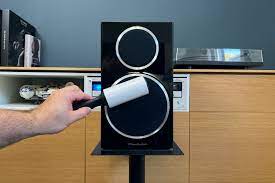How to Animate in Blender

Blender is an open-source, 3D creation software that is available for free. It is a versatile 3D creation tool that can be used to create animations, models, and games. Blender is popular among artists and developers because of its powerful features and its ease of use. Animating in Blender is a fascinating process that can be intimidating for beginners. But with the right guidance, anyone can master it. In this article, we will guide you on How to Animate in Blender.
Step 1 – Setting up the Blender interface:
Before starting any animation, you need to set up the Blender interface. There are various windows, buttons, and menus available in Blender that can be overwhelming for beginners. You can customize the interface according to your preference. You can choose which windows you want and save it as your default interface. The essential windows that you need for animation are the 3D Viewport window, the timeline window, and the Properties window.
Step 2 – Creating an object:
To animate anything in Blender, you need to create an object. There are various ways of creating an object in Blender. You can create a box, sphere, or any other object using the Add menu found on the left-hand side of the 3D Viewport window or by pressing Shift + A. You can also import an object or download it from various websites.
Step 3 – Creating a Keyframe:
A keyframe is a point in time during an animation where you set the position, rotation, or scale of an object. Keyframes are the building blocks of any animation in Blender. To create a keyframe, you need to select the object you want to animate, move to the frame where you want to add the keyframe, modify the object’s attribute that you want to animate, and then press the ‘I’ key. You can add keyframes for the position, rotation, and scale of an object.
Step 4 – Modifying Keyframes:
Once you have added a keyframe, you can modify it. To modify a keyframe, you need to move to the frame where the keyframe is located, select the object you want to modify, and then modify the attribute that you want to change. Blender will automatically update the keyframe with the changes you made. You can also delete, copy and paste keyframes.
Step 5 – Animating Objects:
After adding and modifying keyframes, you can animate objects by adding more keyframes. For instance, if you want to animate the movement of a ball, you need to add keyframes for its movement, rotation, and scaling. You can also use various modifiers and constraints to animate objects. Modifiers such as deform, lattice, and curve can be used to create more complex animations. Constraints such as follow path, copy location, and copy rotation can be used to make animations more realistic.
Step 6 – Rendering the Animation:
After completing the animation, you need to render it. Rendering is the process of creating a final output of your animation. Blender allows you to render your animation in different formats and resolutions. You can render your animation by clicking on the Render button on the Properties window. You can also choose to render your animation in Cycles or Eevee engines.



